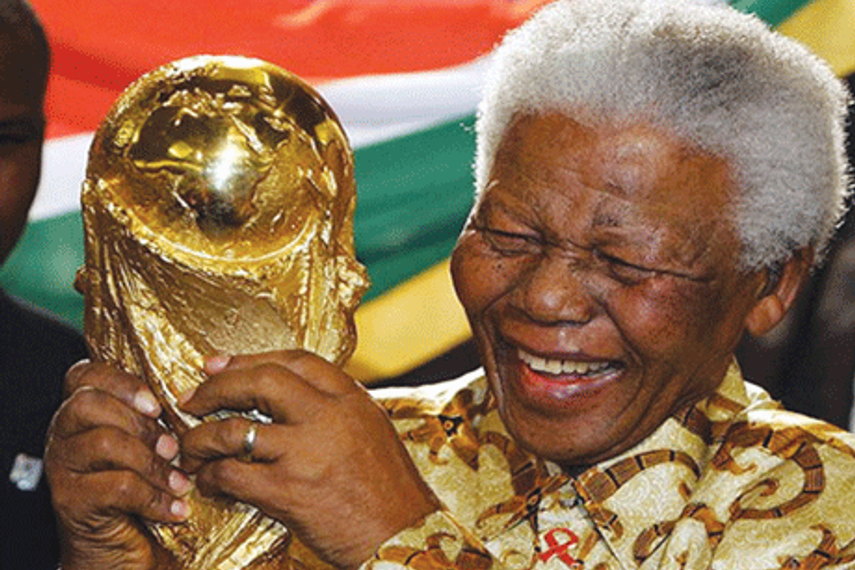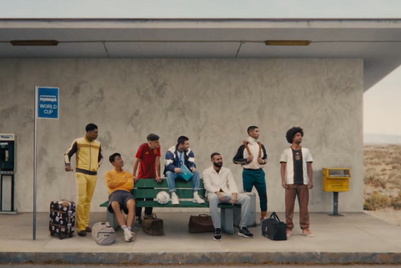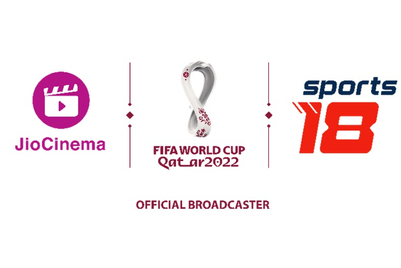
If water cooler conversations are any measure of the popularity of a game, then football surely has made massive inroads into the Indian sport spectator’s psyche. With the 2010 FIFA World Cup likely to generate and sustain football hysteria until 11 July when the finals take place, Campaign India asked industry professionals about the significance of the World Cup for Indian brands.
Max New York Life’s Anisha Motwani believes it is a good opportunity to leverage for brands looking for some differentiation. “If we are going to move away from stereotypes and explore differentiated windows, World Cup will be difficult to ignore. Having said that, it is a long term investment. From a reach of 24 million in 2002, FIFA has doubled in 2006 and is likely to increase manifold. Virtually every brand has a substantial contribution coming from the metros where the format delivers 50% better than in any other market. The penultimate round of EPL matches clocked a rating of 6.5 on metros as good as some of the best format shows in the country.”
Mindshare’s Jai Lala agrees that investing in the World Cup in particular and in football in general in India is a long term initiative. “Although cricket continues to dominate in India, FIFA is a close number two. FIFA’s audience in India is primarily the really young demographic, and hence it makes sense to be associated with the series because brands can reap big returns five years from now.”
Adidas India’s Andreas Gellner says that for the brand, the World Cup is as significant a property as the Olympics. He adds, “From a brand perspective, the World Cup is the one of the most important events for us. It works as a platform to not just increase our sales, it’s also an opportunity to strengthen our positioning as the number one football brand around the world. As far as our expected revenues from the 2010 World Cup go, I can say that we hope to make four times the number that we made in the 2006 series.”
ESPN Star Sports, broadcasters of the 2010 FIFA World Cup in India, are optimistic about what the series will deliver as far as Indian audiences go.
Says ESPN’s Rathindra Bose, “FIFA World Cup 2002 was sampled by 34 million individuals in India while the 2006 edition was sampled by more than 50 million individuals. The affinity has grown in the past few years as fans across the country have sampled quality soccer properties like Barclays Premier League, the Confederations Cup, and the Euro’s. It serves as an opportunity for local as well as international brands to not just build a huge consumer base but also position themselves as an international brand.”
Independent brand strategist Pradeep Gidwani believes that brands need to look beyond on-air sponsorships to leverage the World Cup hysteria. “For a brand to really maximise exposure and association with the 2010 World Cup, they must get involved in innovative activation on-ground to connect with consumers. This could take various formats in addition to traditional advertising and ground perimeter boards (which may give some visibility in a crowded space). Online is a great opportunity for brand association, besides screenings at malls/bars, PR events.”
Suit
Andreas Gellner, MD, Adidas India
“The World Cup is a big brand and sales platform for adidas globally and also in India. From a brand perspective, we activate some of our biggest marketing platforms coming to us through our partnership with FIFA. We concluded our flagbearer property in India three weeks back.From adidas’ perspectve, it’s the first time that we have actually undertaken digital in a very focused manner. Our objective is to win the World Cup digitally and towards that end, there is going to be a digital campaign that gets rolled out soon. I will say that we would like to use digital to drive interest for every match that takes place.”
Marketer
Anisha Motwani, chief marketing officer, Max New York Life
“If EPL growing at 20% year on year since 2005 is any indicator, then the response to the World Cup is going to be tremendous. EPL is the second most popular property after wrestling (beyond cricket) and we are beginning to test the waters on this emerging new economy window. If we are going to move away from stereotypes and explore differentiated windows, world cup will be difficult to ignore. Football is part of an emerging trend in viewership so the returns are not going to be immediate as cricket. However as we progress towards greater acceptance, it will add to brand value, imagery and connect. ”
Broadcaster
Rathindra Basu, director bus. dev., corp. communication, ESPN Software India
“BPL’s just concluded season was sampled by more than 60 million in the country. The last two editions of FIFA World Cup have generated huge interest.. We expect FIFA World Cup 2010 to be hugely successful in terms of viewer traction. The fact that the forthcoming edition is in South Africa means that timings will be suitable for Indian audiences . It serves as an opportunity for local as well as international brands to not just build a huge consumer base but also position themselves as an international brand, resulting in companies and brands associated to get a chance to share the pedestal with a global marquee event.”
Consultant
Pradeep Gidwani, independent brand strategist, formerly MD Carlsberg and Fosters beer
“FIFA World Cup is extremely important to brands and marketers in India. In the last couple of years, soccer has been evolving at the top end of Indian consumers. Any brand that wants to reap any results cannot see the World Cup as a “one off” association. This is a fast evolving sport amongst upper income homes in India. There are two things that will give marketers results. Firstly, a commitment to a long term association with soccer and second, an innovative brand activation around the sport that touches consumers at all points, rather than traditional mass media/ground billboards alone. ”
Media buyer
Jai Lala, Principle Partner – Exchange, Mindshare
“Though cricket continues to dominate India, football is a close No.2. As a result, marketers are keen to leverage the game’s potential. Although the numbers are very small, when you compare it to cricket, football has evolved from a small base. It’s at a decent threshold level.Football followers are passionate and involved. The challenge for brands will be to merge that passion into a sports marketing format in a seamless way. It’s an opportunity for local brands to get involved in the development of the game. It requires huge investments but can deliver huge RoI if sustained over years.”




.jpg&h=334&w=500&q=100&v=20250320&c=1)
.jpg&h=334&w=500&q=100&v=20250320&c=1)


.jpg&h=334&w=500&q=100&v=20250320&c=1)
.jpg&h=334&w=500&q=100&v=20250320&c=1)



.jpg&h=334&w=500&q=100&v=20250320&c=1)




.jpg&h=268&w=401&q=100&v=20250320&c=1)

.jpg&h=268&w=401&q=100&v=20250320&c=1)

